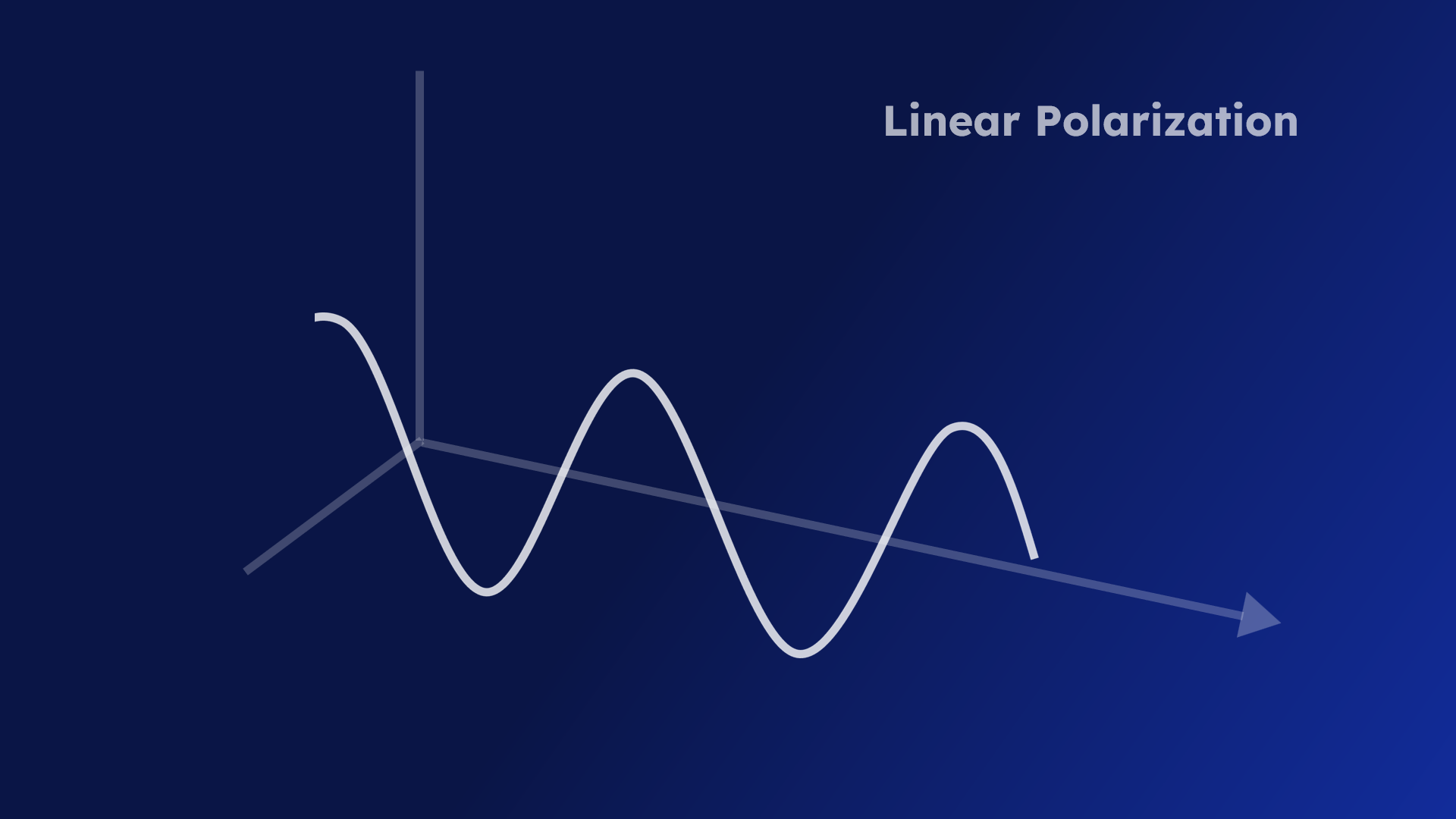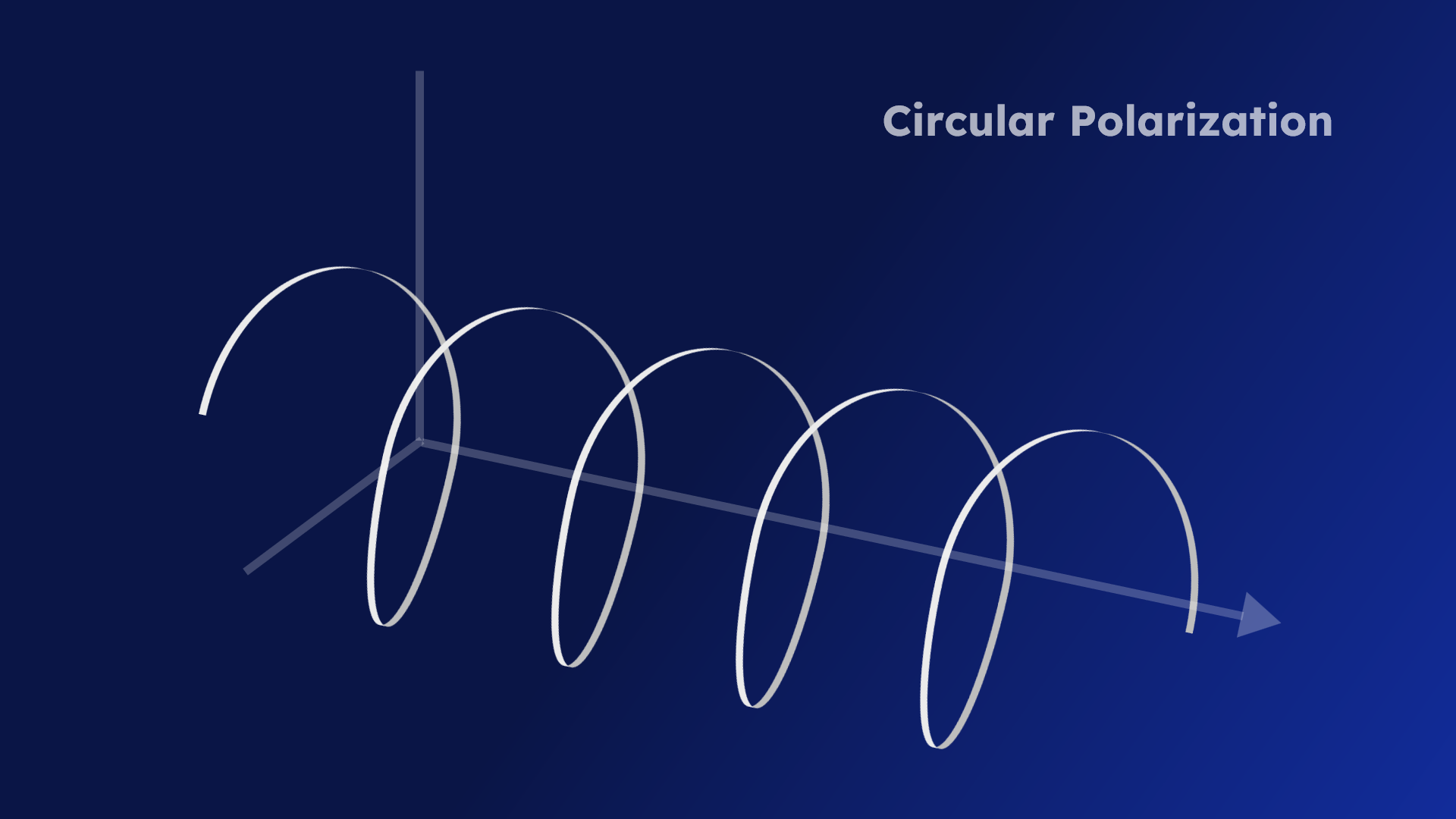Why do LEO Satellite Antennas Utilize Circular Polarization?
Polarization is a key factor in antenna design, directly influencing performance and transmission efficiency. In LEO (Low Earth Orbit) satellite communications, array antennas are widely used, with circular polarization strategically employed.

What is Antenna Polarization?
Polarization refers to the orientation of an electromagnetic wave’s electric field vector. It describes how the electric field oscillates in a particular direction as the wave propagates. Based on the direction of the electric field vector’s oscillation, there are two main polarization types: linear and circular.
Linear Polarization: The electric field vector oscillates along a fixed direction, such as horizontal or vertical. When the polarization directions of the transmitting and receiving antennas align, signal transmission efficiency is optimized. However, if the polarization directions differ, signal strength can diminish. Vertical or horizontal linear polarization antennas are commonly used in mobile communication systems.

Circular Polarization: The electric field vector rotates in a helical pattern as the wave propagates, which can be either LHCP (Left-Hand Circular Polarization) or RHCP (Right-Hand Circular Polarization). Circular polarization helps to minimize signal attenuation caused by angular variations between the transmitting and receiving ends, making it particularly suitable for environments with movement, rotation, or multipath effects. 
Why Do LEO Satellites Use Circular Polarization?
Circular polarization antennas reduce signal attenuation across various transmission paths, especially when satellites move rapidly. This enhances signal stability and communication efficiency. Here are three critical features of circular polarization.
Reduce Polarization Loss: In LEO satellite communications, the satellite’s constant movement means that the transmission path and angle are not fixed. Linear polarization can lead to signal loss or attenuation due to the misalignment of polarization angles between the transmitting and receiving ends.
Improve Multipath Interference Resistance: Circular polarization antennas effectively counter multipath effects, where signals reflect off different surfaces before reaching the receiver, potentially causing interference or signal distortion. Circular polarization maintains higher signal integrity across various reflection paths, thus improving signal quality.
Reduce Path Loss: Atmospheric conditions like rain, fog, and ionospheric disturbances can degrade satellite signals. With its rotating electric field, circular polarization is less affected by these conditions than linear polarization. This makes it more effective at reducing path loss, especially in long-distance satellite communications, ensuring more stable and reliable signal transmission.
YTTEK’s Support for Circular Polarization Antenna R&D
YTTEK’s Y.BEAM is a 28GHz detachable FEM (front-end module) tailored for LEO satellite communication R&D. This module combines a detachable array antenna design with circular polarization capability and an integrated up/down converter, offering a comprehensive solution for LEO satcom and 5G mmWave array antenna design, communication algorithm development, and system integration.
Features of Y.BEAM
- Antenna array module detachable design
- 26.5 – 29.5 GHz operation frequency for LEO / 5G mmWave R&D
- Dual 4×8 antenna modules integrated with designable polarization independently
- Support TDD half-duplexing operation and FDD
- 2.6 – 5.8 GHz IF frequency range
- 48dBm high EIRP
Y.BEAM features two independent 4×8 32-element antenna array modules. Each module can be configured for LHCP (Left-Hand Circular Polarization), RHCP (Right-Hand Circular Polarization), or horizontal/vertical linear polarization, making it ideal for both LEO satellite communication and 5G mmWave R&D. This module serves as a versatile tool for researchers to conduct OTA testing to validate algorithms related to beamforming, beam tracking, and beam management.

